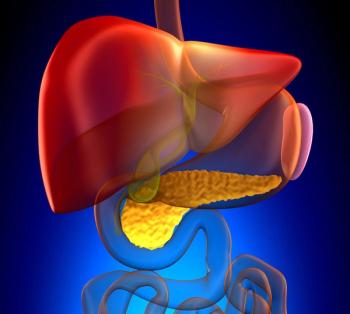
sBLA Submitted Seeking Approval of Daratumumab, Hyaluronidase-fihj Combo for AL Amyloidosis
The supplemental biologics license application is seeking approval for the treatment of patients with light chain amyloidosis and is supported by results observed in the phase 3 ADROMEDA study.
The Janssen Pharmaceutical Companies of Johnson & Johnson has submitted a supplemental biologics license application (sBLA) to the FDA seeking approval of daratumumab and hyaluronidase-fihj (Darazalex Faspro), a subcutaneous formulation of daratumumab, for the treatment of patients with light chain (AL) amyloidosis.1
The sBLA is supported by results observed in the phase 3 ADROMEDA study. Data from this study were presented as a late-breaking abstract at the 25th European Hematology Association Annual Congress in June.
"We are excited about the potential of helping patients with AL amyloidosis who currently have no FDA-approved therapies for the treatment of their disease," Craig Tendler, MD, vice president of Clinical Development and Global Medical Affairs as well as Oncology at Janssen Research & Development, LLC, said in a press release. "The results from the phase 3 ANDROMEDA study also provide preliminary evidence of [the daratumumab and hyaluronidase-fihj combination’s] potential to modify the organ damage that is a hallmark of this serious disease with high unmet needs and we look forward to collaborating with the agency in the review of the application."
The ongoing, randomized, open-label, phase 3 ANDROMEDA study is investigating the safety and efficacy of daratumumab and hyaluronidase-fihj in combination with bortezomib (Velcade), cyclophosphamide, and dexamethasone (Ozurdex) (D-VCd), compared to VCd alone, for the treatment of patients with newly diagnosed AL amyloidosis. Overall, 388 patients with newly diagnosed AL amyloidosis with measurable hematologic disease and 1 or more organs affected were included in the study.
The study’s primary end point is overall complete hematologic response rate by intent-to-treat (ITT). Key secondary end points include major organ deterioration progression-free survival (PFS), event-free survival (EFS), organ response rate, overall survival (OS), and time to hematologic response, among others.
Hematologic complete response (CR) rate was found to be 53% for D-VCd and 18% for VCd (OR, 5.1; 95 CI, 3.2-8.2; P < .0001).2 Additionally, patients receiving D-VCd achieved higher rates of overall hematologic response (92% vs. 77%) and very good partial response or better (VGPR; 79% vs. 49%) compared with patients receiving VCd. Moreover, among 195 patients who achieved at least a VGPR to treatment with D-VCd, median time to VGPR or better was 17 days and median time to CR was 60 days, compared to 193 patients who received VCd whose median time to VGPR or better was 25 days and median time to CR was 85 days.
Further, the 6-month organ response rate was almost doubled for patients treated with D-VCd versus VCd alone, for both cardiac (42% vs. 22%; P = .0029) and renal (54% vs. 27 %; P < .0001) responses. In addition, major organ deterioration PFS (HR, 0.58; 95% CI, 0.36-0.93; P = 0.0224) and major organ deterioration EFS (HR, 0.40; 95% CI, 0.28-0.57, P < .0001) favored the D-VCd arm, demonstrating considerably delayed major organ deterioration, hematologic progression, or death, as well as improved EFS.
The most common grade 3 or 4 treatment emergent adverse events (TEAEs) observed in more than 5% of patients for the D-VCd arm compared to the VCd arm, included lymphopenia (13% vs 10%), pneumonia (8% vs 4%), diarrhea (6% vs 4%), cardiac failure (6% vs 5%), neutropenia (5% vs 3%), syncope (5% vs 6%), and peripheral edema (3% vs 6%). The study also demonstrated that subcutaneous daratumumab had a low rate of administration-related reactions (ARRs). In total, systemic ARRs in the D-VCd arm occurred in 14 patients (7%), all of which were grade 1 or 2, and most occurred during the initial administration. A total of 56 deaths occurred (D-VCd, n = 27; VCd, n = 29).
Notably, the FDA approved daratumumab and hyaluronidase-fihj in 2020 as the only subcutaneous CD38-directed antibody approved to treat patients with multiple myeloma. Additional studies are currently underway to assess the safety and efficacy of the combination in the treatment of other malignant and pre-malignant hematologic diseases in which CD38 is expressed, including smoldering myeloma and in AL amyloidosis.
References:
1. Janssen Submits Application Seeking U.S. FDA Approval of DARZALEX FASPRO™ (daratumumab and hyaluronidase-fihj) for the Treatment of Patients with Light Chain (AL) Amyloidosis [news release]. Raritan, NJ. Published September 10, 2020. Accessed September 11, 2020. https://finance.yahoo.com/news/janssen-submits-application-seeking-u-114500392.html?.tsrc=fin-srch
2. Subcutaneous Daratumumab Combination Resulted in Deep and Rapid Hematologic Responses and Improved Clinical Outcomes in the Treatment of Patients with Newly Diagnosed Light Chain (AL) Amyloidosis [news release]. Raritan, NJ. Published June 13, 2020. Accessed September 11, 2020. https://www.jnj.com/subcutaneous-daratumumab-combination-resulted-in-deep-and-rapid-hematologic-responses-and-improved-clinical-outcomes-in-the-treatment-of-patients-with-newly-diagnosed-light-chain-al-amyloidosis
Newsletter
Stay up to date on recent advances in the multidisciplinary approach to cancer.














































































